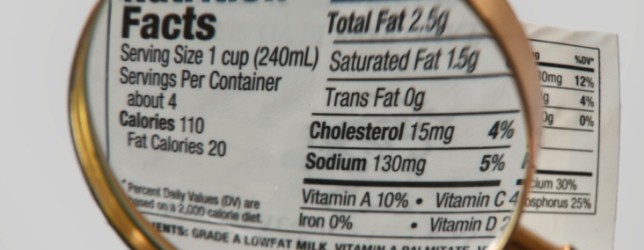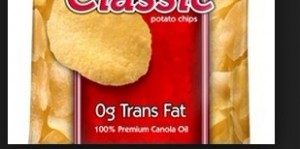Secrets on Misleading Food Labeling Marketing
Feb 21st, 2013 by denisetian
Look at the packaging labels around us: whole grain, 0 trans-fat, low sugar, real fruit, etc. Companies play hard to label their product to look healthy and nutritious. Is it really the case as stated on the label?
#1 Misleading Serving Size
Companies sometimes manipulate the serving size to make their product look healthier. Look at this nutritional label on a muffin: 600 calories and 18g of fat per serving: with 3 servings per muffin. Guess how many people will pick up a muffin and only eat one third of it? It is actually 1800 calories per muffin, but companies usually do not write like that because it does not look healthy.
#2 Inaccurate Nutrition Label
As you pick up a frozen dinner with 500 calories label, you are happy that you get low calorie fast meal. Be cautious! The meal may contain 600 calories! You need to consider that Food and Drug Administration (FDA) allows calorie counts on the standard “Nutrition Facts” labels to be off by as much as 20% before they even think about getting involved. Now you see how companies play around with this rule to make their label look better. A 2011 report1 showed that 24% of nutritional labels were grossly inaccurate: that’s 1 out of every 4 products on the shelf! So it is better to be skeptical being a consumer facing the massive labeling marketing.

If you go shopping see the 0 trans-fat chips on the shelf, and your eyes shined and excited to buy one bag without worrying about getting any fat! You probably fall into the marketing trap again. A little known fact about nutritional guidelines in the US is that any amount of fat or sugar under 0.5g per serving can be listed as 0g. So say a bag of chips 450g, which is 16 servings. By easy calculation, the bag might legally contain as much as 8g of trans-fat without being labeled. Trans-fat should be eaten in small concentrations with recommendation of trans-fat to 2 g per day or less. That means a bag of 0 trans-fat chips could potentially consume 4 times the daily limits.

With all the above being said, it is very important to be skeptical, informed and cautious on picking packaged food. Eating healthy is not as simply as following what the label says. It could lead to the opposite direction of being healthy.
Cited from:
http://www.livestrong.com/article/370685-how-many-fat-grams-per-day/
http://www.builtlean.com/2013/02/13/food-industry-marketing-facts/
